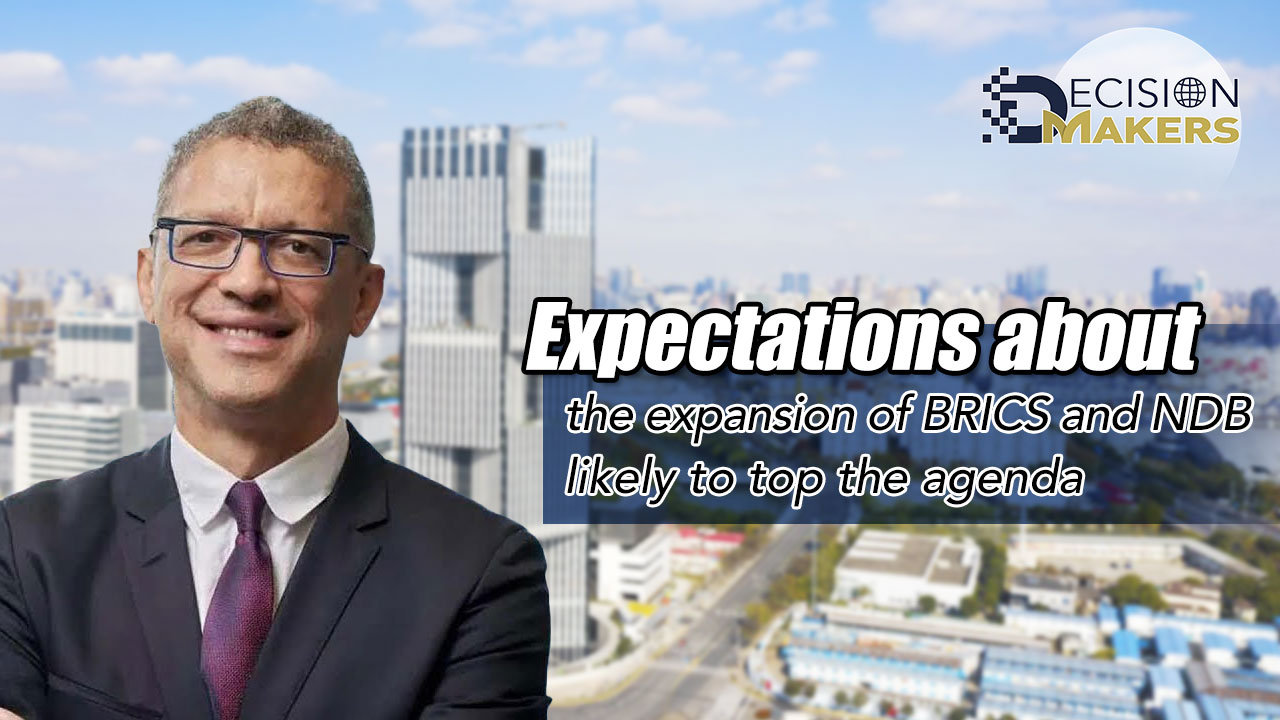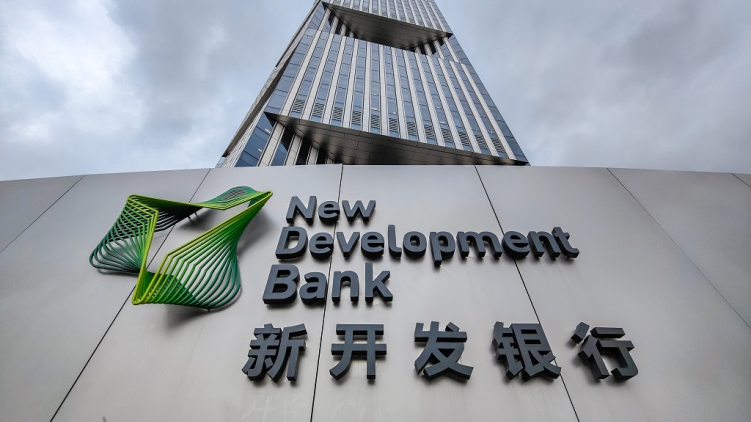
Editor's note: Decision Makers is a global platform for decision makers to share their insights on events shaping today's world. Leslie Maasdorp is vice president and CFO of the NDB. He was a member of the founding management team in 2015. The article reflects the author's opinions and not necessarily the views of CGTN.
The 15th BRICS summit is taking place at a moment when the financial firepower of development banks has been placed under a bright spotlight. Institutions like the New Development Bank (NDB), Development Bank of Southern Africa (DBSA), Industrial Development Corporation (IDC) in South Africa and, the National Development Bank of Brazil (BNDES), amongst others, have been urged by their governments to search for ways to scale their operations and increase their overall lending volumes as well as development impact.
Since the COVID-19 pandemic, the developmental challenges in all BRICS countries have become more pronounced. Available fiscal resources from the state and financing from development banks do not meet practical needs. BRICS countries in general have limited fiscal space to respond to the economic crisis and require external financing to fill this funding gap.
July 2023 marked the eighth anniversary of the New Development Bank (NDB), the multilateral development bank established by BRICS countries (Brazil, Russia, India, China and South Africa). The NDB is the most visible expression of the aspiration of BRICS to give greater voice to emerging markets and developing countries in the global financial architecture. Eight years on, the summit will have the opportunity to reflect on the key achievements of the bank and propose new ways to enhance its effectiveness.
Multilateral development banks are unique institutions as they are able – as long as they are riding very high credit ratings – to leverage their own capital and raise considerable amounts of additional resources through the issuance of debt in the global capital markets.
The core purpose of the bank is to mobilize resources for infrastructure and sustainable development in BRICS countries and beyond. To date, the bank has approved sustainable infrastructure projects to the value of $35 billion to BRICS countries.
Against this backdrop, the NDB has three core priorities going into the summit. First, development finance institutions (DFIs) are expected to play a more catalytic role and focus on mobilizing private sector capital with the aim to use the limited capital of our institutions more efficiently. To this end, there is scope for development banks throughout BRICS countries to harmonize their financial products, simplify their operating procedures, increase speed of execution, and standardize our appraisal and investment processes, including legal documentation. More could be done amongst the DFIs to enhance project preparation and to reduce risks inherent in some projects. These efforts will improve the risk/return profile of projects and enhance the ability of the DFIs to work with private investors and attract more private capital.

The New Development Bank headquarters building in Shanghai, China, September 3, 2021. /VCG
The New Development Bank headquarters building in Shanghai, China, September 3, 2021. /VCG
The NDB will use the platform of the BRICS summit to deepen its existing relationships with the national development banks of its member countries. In addition, the bank will engage actively with private sector companies at the summit to explore the potential for new and innovative partnerships to mobilize more private sector capital for development.
Secondly, BRICS countries like South Africa, China and India have some of the world's largest coal-fired power station fleets. Shifting financing away from fossil fuel projects is a high priority in all member countries. We therefore expect considerable dialogue at the BRICS summit on climate finance with particular emphasis on the Just Energy Transition. In this regard, South Africa has the potential to be the global pilot with respect to the financing of its decarbonization process which could become a blueprint for other BRICS countries.
The creation of the NDB as the newest multilateral bank in 2015 coincided with significant developments in the sustainability agenda. In the same year, the international community formulated the 2030 Agenda for sustainable development, and the 17 Sustainable Development Goals (SDGs) came to life. A few months later, the first legally binding treaty on climate change – the landmark Paris Accord – was signed. It was therefore unsurprising that when the bank adopted its Five-Year Strategy for 2022-2026, 40 percent of annual lending volumes for climate finance was hardcoded in its commitments, elevating the climate agenda as the number one institutional priority. This commitment to the climate agenda makes the NDB a powerful drawcard for other developing countries seeking new ways to finance their climate transition plans.
Thirdly, a key strategic priority for the NDB is to expand its membership beyond BRICS countries. This will enhance its global relevance as an emerging market-focused multilateral bank while also injecting fresh capital into the bank at the same time. The summit provides a good platform for the bank to engage in conversations with new potential member countries at the senior level, including many heads of states.
A further feature of the bank which enhances its appeal to new members is its local currency financing strategy. Since its inception, the NDB has prioritized local currency financing. It has since established strong credentials in local capital markets, especially in Chinese RMB. The first bond issuance of the bank was done in July 2016 in Chinese RMB. Since that first issuance, the bank has issued 41 billion yuan of local currency bonds cumulatively in China. Most recently, on August 14, 2023, the bank successfully raised 1.5 billion rand ahead of the 15th BRICS summit, delivering on its long-standing intent to issue bonds in the South African capital markets. This is a demonstration of the importance of local currency financing in all our member countries.
Furthermore, the bank is now in an advanced process of engagement with regulators in India to register a rupee bond program. Overall, it is our ambition to finance up to 30 percent of all our operations in a local currency. However, we will continue to raise the U.S. dollar as well as other hard currencies including the euro, the British pound and the yen for the remaining 70 percent of our funding needs. Our central objective is to find the most efficient, lowest cost of funds in various markets to enable the bank to pass the pricing benefit to our member countries. As a dominant reserve currency, the U.S. dollar is an important market for the NDB and all other multilateral development banks.
In short, the New Development Bank is an attractive value proposition for potential new members. It has successfully navigated the challenges of 2022 when geopolitical factors – specifically sanctions imposed on Russia – led to a one notch downgrade of the Bank from AA+ to AA, and a negative outlook by Fitch Rating Agency. In May 2023, the negative outlook was removed, and a stable outlook was restored. Furthermore, in 2023, Standard & Poor affirmed the Bank's rating at AA+ with a stable outlook.
The stage is now firmly set for more countries to join and for the Bank to cement its role as a major provider of finance to fast track the transition to net zero in the emerging markets.
(If you want to contribute and have specific expertise, please contact us at opinions@cgtn.com. Follow @thouse_opinions on Twitter to discover the latest commentaries in the CGTN Opinion Section.)